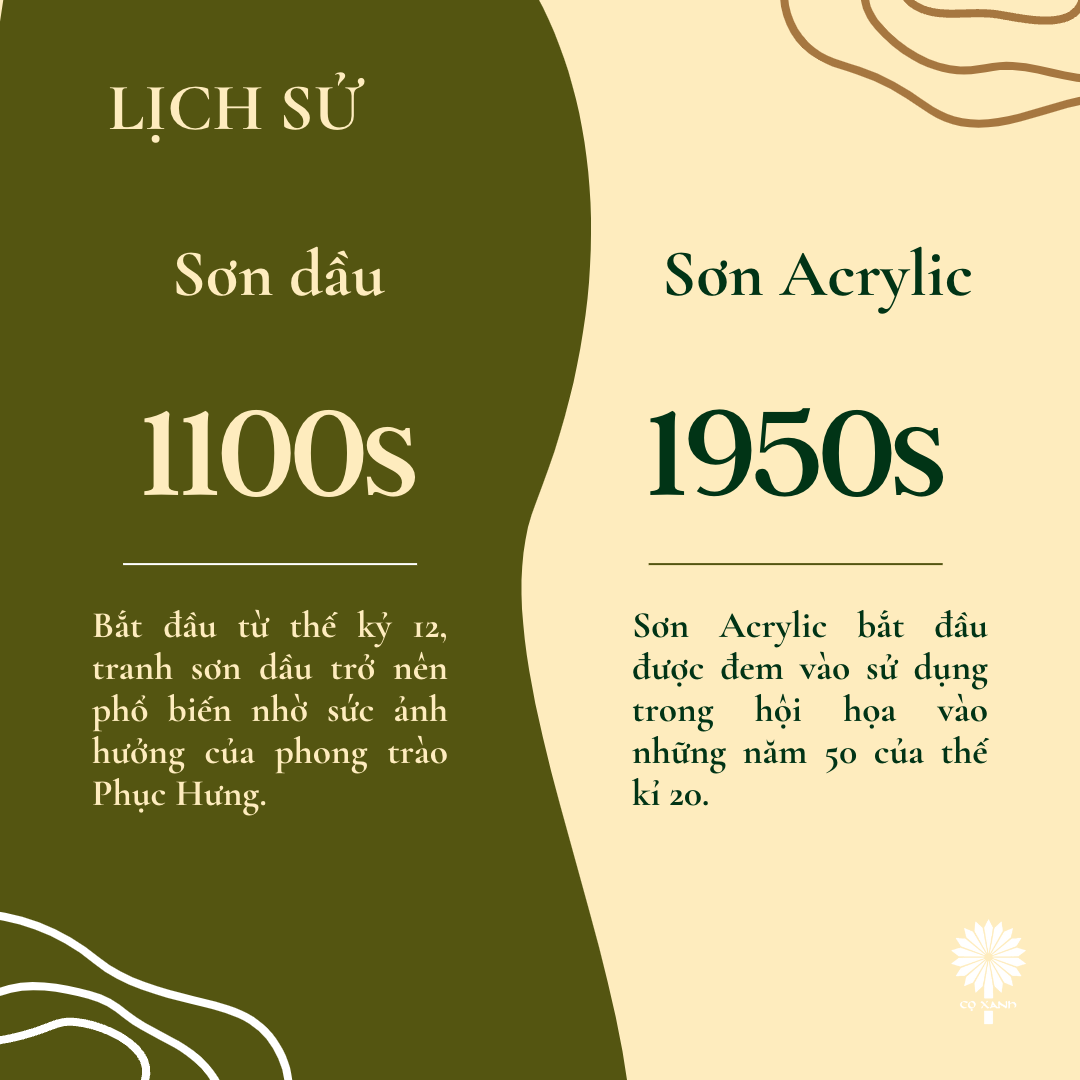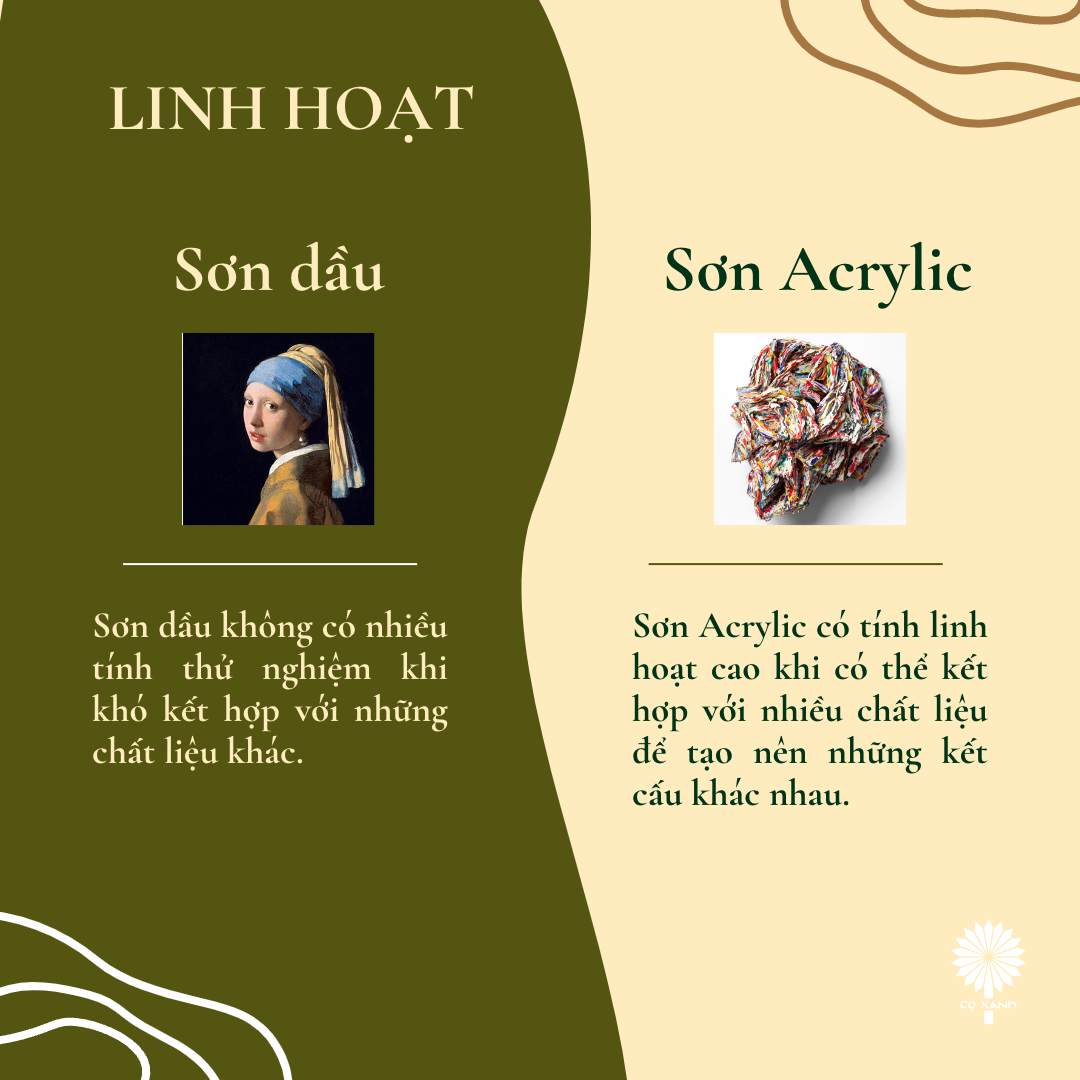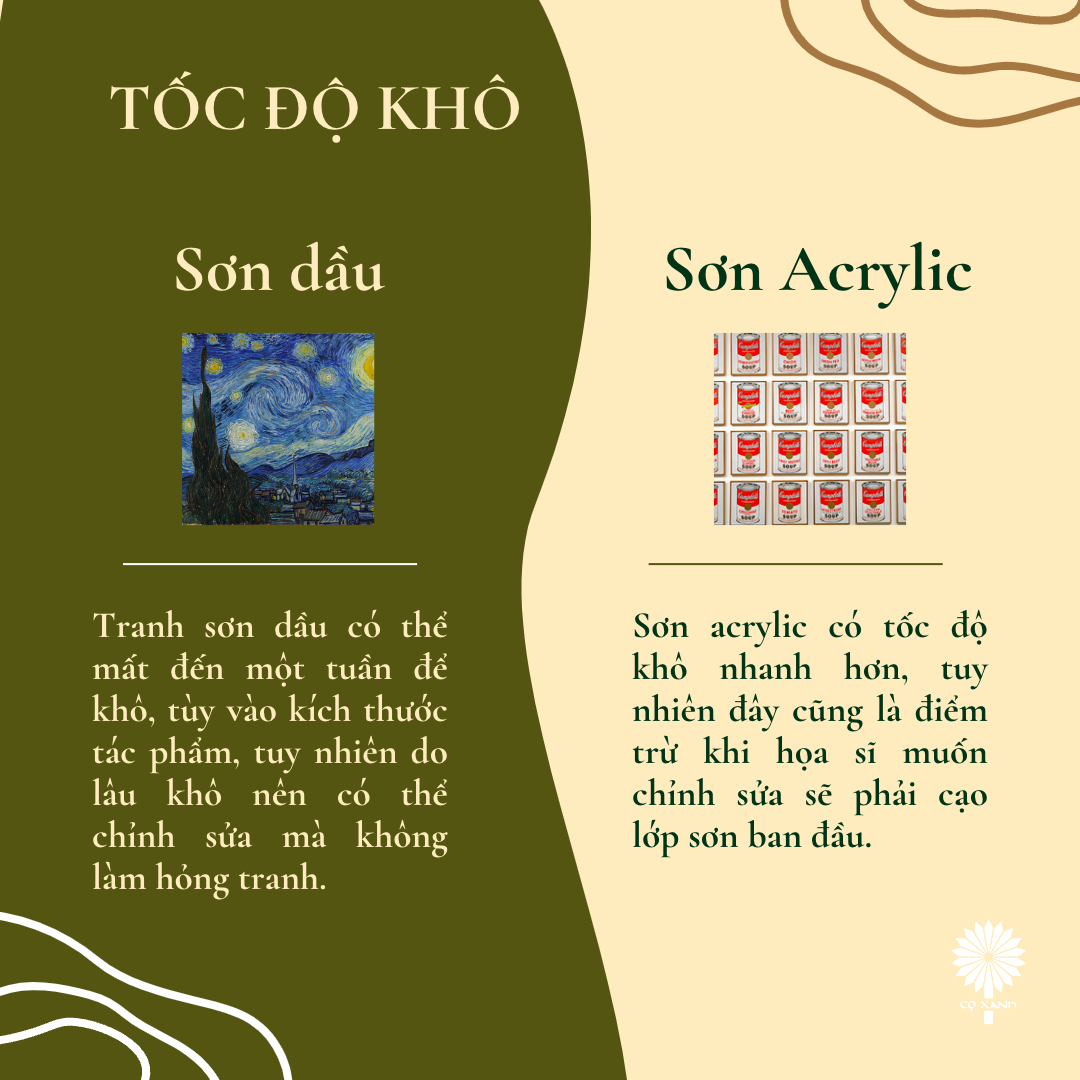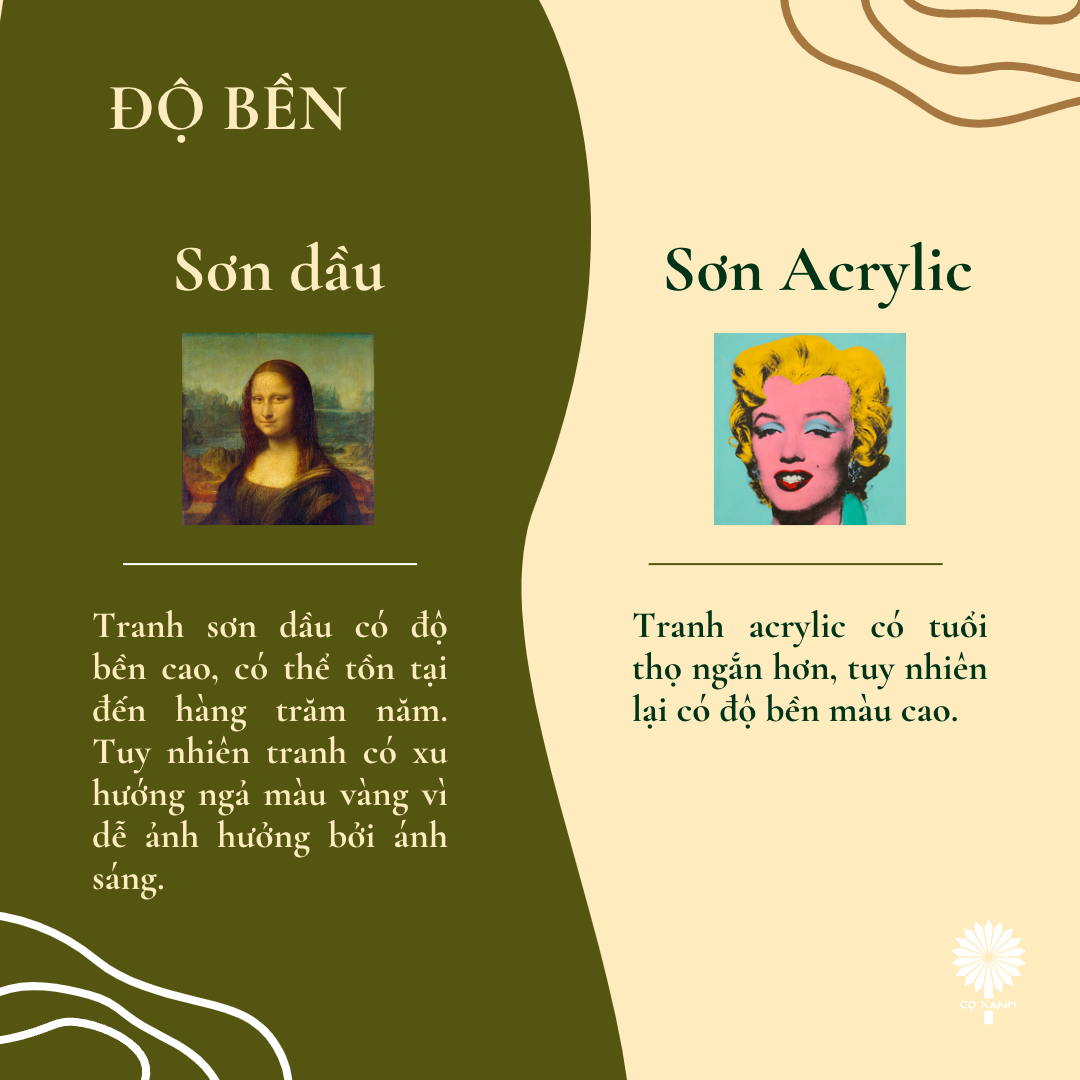Oil Paint And Acrylic: Some Differences
Those of you who love painting are probably no strangers to the concepts of painting materials such as gouache, lacquer, oil paint or acrylic paint. While gouache and lacquer offer completely different experiences, oil paint and acrylic paint are sometimes difficult to differentiate for new viewers. Today, let’s point out the unique features that create the appeal of oil and acrylic paints!
I. Differences in the history of formation
Oil painting in the history of painting is classical. It was first developed in the 12th century and has been used throughout the history of painting to create many classic works. Such as “Mona Lisa” by Leonardo da Vinci or “Starry Night” by Van Gogh. Although they have a very long lifespan, oil paintings require more steps in cleaning and preserving.
Acrylic developed much later and was first produced commercially in the 1950s. Unlike oil paint, acrylic is easier to clean and preserve.
II. Some comparisons between the two types of paint
1. The paint film of oil paint is quite resistant to alkaline environments, so it is not suitable for surfaces such as bricks, mortar, concrete, plaster… However, acrylic does not have this problem.
2. Acrylic paint film is resistant to low temperatures. At temperatures close to 0 degrees Celsius, it can easily lead to brittleness and cracking. However, oil paint, on the contrary, is quite cold-resistant and can withstand negative temperatures.
3. Acrylic is more susceptible to dust than oil paint, more difficult to clean but adheres very well to rough surfaces.
4. The lifespan of an oil painting can be up to 500 years (with good quality painting and proper preservation). The lifespan of acrylic paintings under similar conditions is even longer due to the chemical properties used in industry and other factors.





III. General methods for preserving oil and acrylic paintings
1. Avoid/limit direct sunlight: exposure to direct sunlight will fade the color of works of art. Therefore, you should avoid hanging paintings in places that often receive direct sunlight.
2. Pay attention to humidity: This is especially important for oil paintings because high humidity will damage the painting. The works are best preserved in a climate-controlled environment in Vietnam.
3. Avoid touching the work: Avoid touching the work directly. Direct contact of fingerprints and natural oils from human hands will result in damage to the work.
4. Dust: If the work is not covered with glass, absolutely do not clean the work with water or any solvent. We should only use a feather brush to lightly brush the works and wipe the surrounding frame with a soft cloth.
IV. Representative artists in each material
1. Oil painting artist
- Nguyen Thanh Binh
- Hoang Phuong Vy
- Dao Hai Phong
- Nguyen Quang Minh
- Nguyen Trong Minh
- Van Tho
- Hong Viet Dung
2. Họa sĩ tranh acrylic
GREEN PALM GALLERY – Phòng tranh Cọ Xanh
Headquarters: 39 Hang Gai, Hanoi, Vietnam
Hotline: + 84 24 3828 8298 – +84 97762 7722
Email: info@greenpalmgallery.com
Branch: 49 Mac Thi Buoi, Ben Nghe Ward, District 1, Ho Chi Minh City, Vietnam
Hotline: +84 28 6650 7477 – +84 98874 1116
Email: info_hcm@greenpalmgallery.com
Website: http://greenpalmgallery.com/
Fanpage: https://www.facebook.com/GreenPalmGallery


